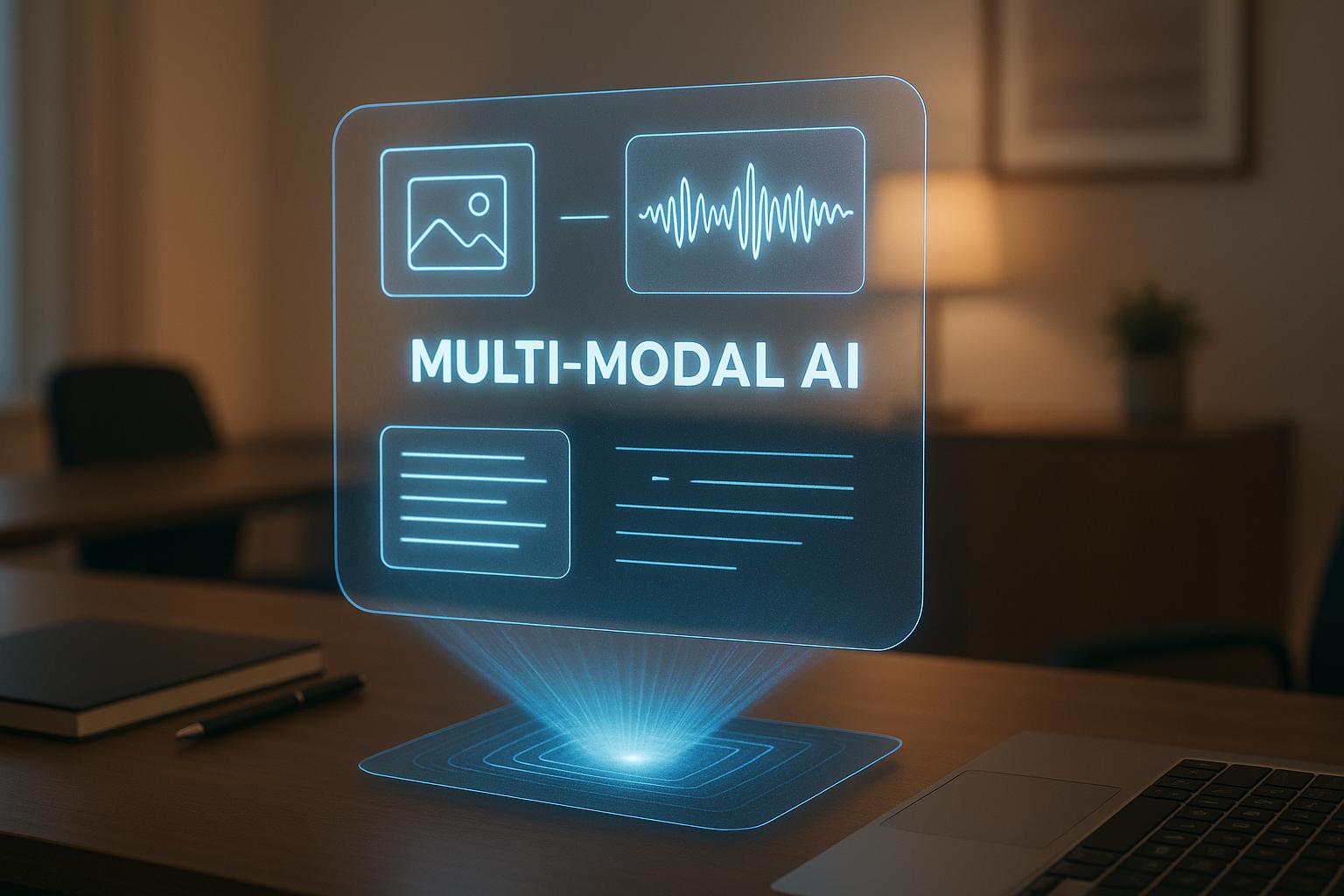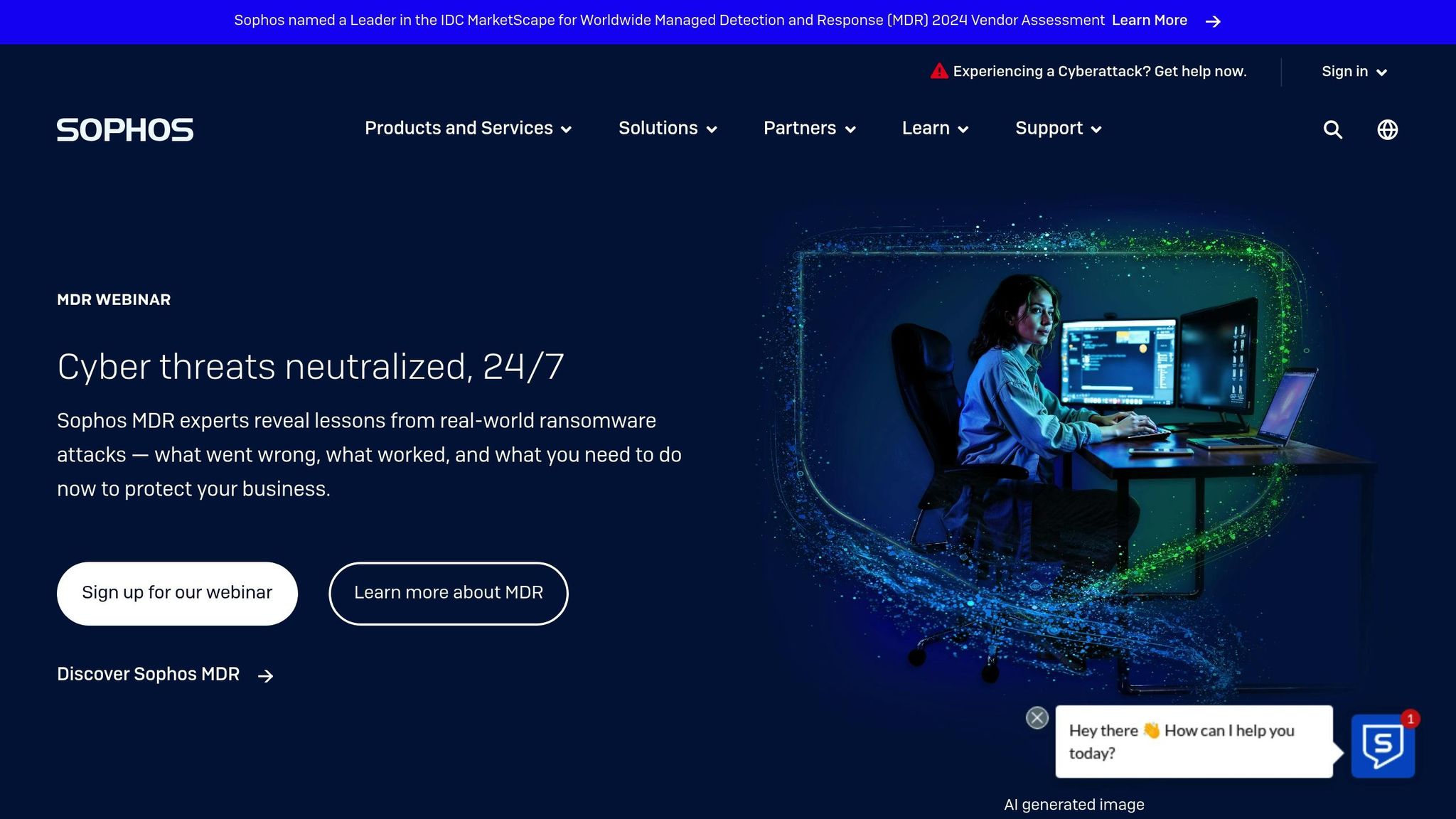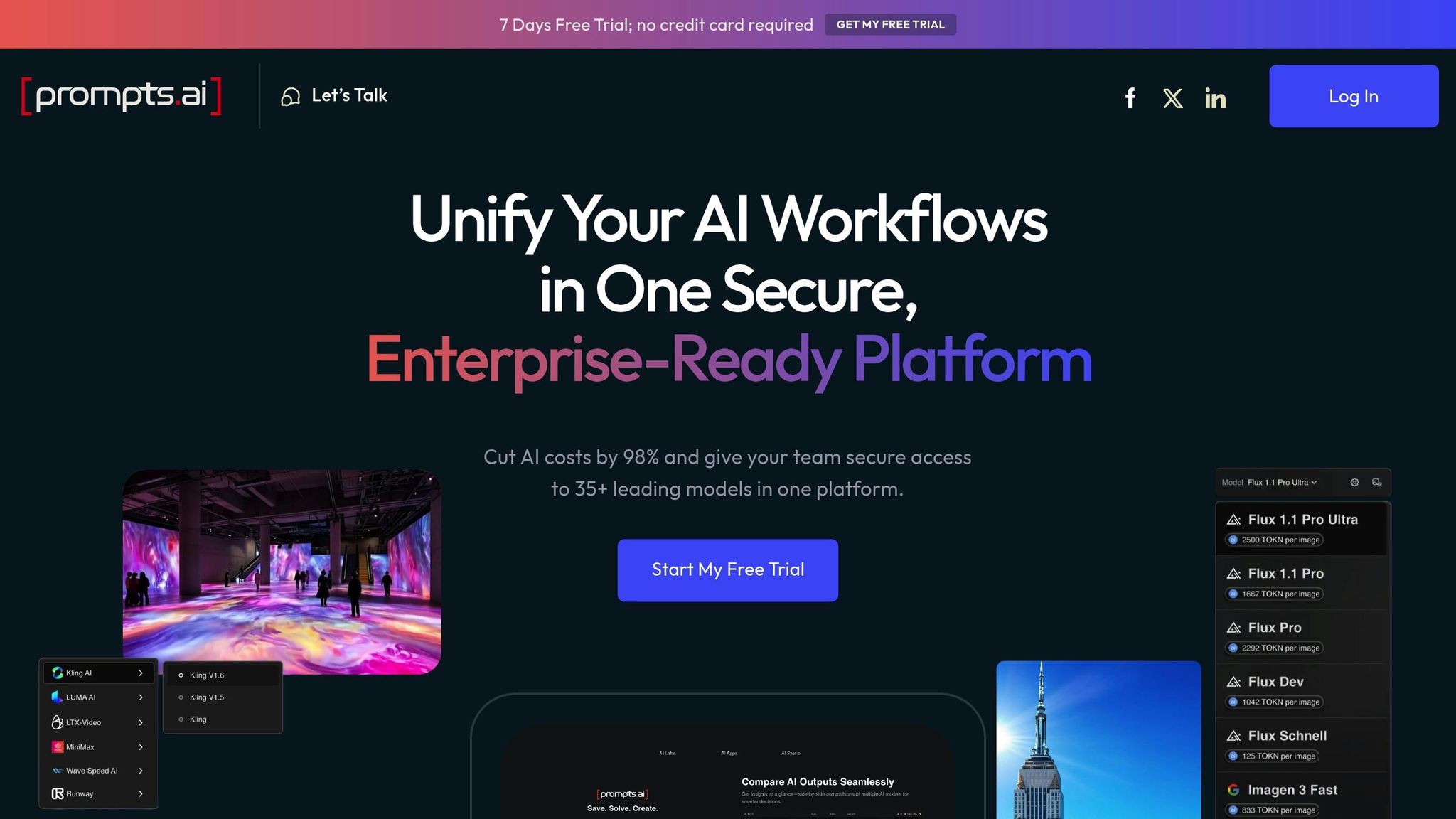
Multi-modal AI systems process text, images, audio, and video together, offering advanced capabilities but introducing complex security risks. These include adversarial attacks, data leakage, and manipulation techniques like jailbreaks. Without proper safeguards, organizations face financial losses, compliance violations, and reputational damage.
Key risks:
Solutions focus on layered security, red teaming for vulnerability testing, and strong data governance. Tools like Prompts.ai enhance protection with encryption, automated compliance checks, and secure collaboration features.
Takeaway: Securing multi-modal AI demands proactive strategies to address its expanded attack surface. Ignoring these risks can lead to significant consequences.

Multi-modal AI systems bring unique challenges that go beyond the vulnerabilities of traditional single-input models. By processing text, images, audio, and video simultaneously, these systems increase their exposure to potential attacks. Understanding these risks is critical to building stronger defenses.
Adversarial attacks manipulate inputs in subtle ways to trick AI systems into making incorrect decisions. In multi-modal AI, this becomes even more dangerous because the interaction between different data types can amplify the impact of a single compromised input. For instance, a DeepFake video could include barely noticeable adversarial audio distortions, while altered images might deceive AI-based authentication systems. Even captions can be crafted to bypass text moderation filters.
The real-world implications of such attacks are alarming. In healthcare, tampered imaging combined with altered patient records could lead to incorrect diagnoses. In autonomous vehicles, manipulated sensor data might cause accidents. Similarly, in security systems, modified visuals or audio could allow unauthorized access.
These threats are not limited to isolated incidents. Imagine tampered sensor data in smart city systems: a single attack could disrupt traffic lights, causing chaos and accidents. False data injected into surveillance systems could mislead law enforcement. Coordinated attacks across multiple modalities, such as combining manipulated text and images, can even influence social media algorithms, spreading misinformation and fueling disinformation campaigns.
But adversarial inputs are just one part of the problem. Multi-modal systems also face significant risks related to data privacy.
Handling multiple types of data increases the likelihood of accidental data exposure and makes it harder to control access across all modalities.
Recent studies have shown just how vulnerable multi-modal models can be. For example, these systems are much more likely to produce harmful content when exposed to adversarial prompts.
"Multimodal AI promises incredible benefits, but it also expands the attack surface in unpredictable ways."
- Sahil Agarwal, CEO of Enkrypt AI
One particularly concerning risk involves "jailbreak" techniques, where adversarial prompts embedded in non-text inputs (like image files) bypass safety filters. According to Enkrypt AI:
"These risks were not due to malicious text, but triggered by prompt injections buried within image files, a technique that could realistically be used to evade traditional safety filters"
Security measures often focus primarily on text-based data, leaving other types - such as images and audio - more vulnerable. This oversight creates opportunities for adversarial attacks to extract or reconstruct sensitive information. Additionally, unsecured datasets used during training can inadvertently leak private data.
Recent incidents highlight these dangers. In January 2023, Yum! Brands faced an AI-driven ransomware attack that disrupted operations at 300 locations. In December 2023, an AI-generated phishing SMS tricked an Activision HR employee, exposing sensitive employee data.
Multi-modal AI also makes it easier to create convincing fake content, posing risks to content authenticity and information integrity. These systems can generate realistic fake videos, images, audio, and text, making it harder to distinguish truth from fabrication. Coordinated attacks targeting multiple modalities can amplify errors, causing more widespread harm than attacks focused on a single data type.
For example, attackers might mix misleading text with manipulated images, add noise to audio files, or tamper with sensor readings. The result? Entirely fabricated yet highly believable content.
Research from Anthropic has raised concerns about the behavior of AI models when faced with harmful scenarios:
"Models consistently chose harm over failure"
This is especially troubling for multi-modal systems, as the complexity of processing diverse data types can mask malicious intent, making harmful outputs harder to detect. Traditional detection tools designed for single data types often fail to catch these coordinated deepfakes. Compounding the issue, the speed and scale at which compromised systems can generate content make it nearly impossible for human moderators or conventional detection systems to keep up with rapidly spreading misinformation.
Recognizing these vulnerabilities is a crucial step in building stronger defenses against the risks posed by multi-modal AI.
To protect multi-modal AI systems from ever-evolving threats, organizations must adopt comprehensive strategies. With 96% of executives anticipating increased breach risks over the next three years, the need for robust defenses has never been more pressing. The best approach focuses on integrating multiple layers of security rather than relying on isolated solutions.
A layered security approach involves deploying multiple defenses, each designed to address specific risks. This creates multiple barriers for attackers, making it harder for them to succeed. Below are the eight core layers of this architecture, along with their roles and security measures:
| Layer | Description | Security Measures |
|---|---|---|
| Perimeter Security | Protects the network boundary from unauthorized access and malicious activity | Firewalls, intrusion detection/prevention systems, secure gateways |
| Network Security | Ensures the integrity and confidentiality of data in transit | Encryption, secure protocols (HTTPS, SSL, TLS), network segmentation |
| Endpoint Security | Secures individual devices connecting to the network | Antivirus software, Endpoint Detection and Response (EDR), Mobile Device Management (MDM) |
| Email Security | Defends against threats delivered via email | Email authentication (DMARC, DKIM, SPF), phishing and spoofing protection |
| Data Security | Protects data at rest and in transit | Encryption, Data Loss Prevention (DLP) |
| Identity and Access Management | Manages system access based on user roles and privileges | Multifactor authentication (MFA), Privileged Access Management, Role-Based Access Control (RBAC) |
| Physical Security | Restricts unauthorized physical access to facilities and systems | Keycards, biometric scanners, surveillance cameras, alarms |
| Security Policies and Training | Educates employees and provides incident response guidance | Security awareness training, incident response plans |
Real-world examples highlight the importance of these layers. In 2019, Capital One suffered a breach affecting over 100 million customers due to a misconfigured firewall in its cloud infrastructure. This underscores the critical need for strong cloud security practices, especially in AI-powered workflows like customer management and credit approval.
Organizations should also implement policy-based access controls, enforce strong authentication methods (like MFA or biometrics), encrypt AI models, and anonymize data using techniques like differential privacy. Regular penetration testing, timely patch updates, and continuous staff training are essential to maintaining system resilience.
But layered defenses alone aren’t enough. Rigorous testing is vital to uncover vulnerabilities.
To identify weaknesses in multi-modal AI systems, organizations should simulate attacks through red teaming exercises. These simulations focus on risks such as data poisoning and prompt injection, emphasizing proactive security measures over reactive fixes. Unlike traditional systems, modern AI models often behave unpredictably, making them vulnerable to unique threats that standard testing might overlook.
Ruben Boonen, CNE Capability Development Lead at IBM, explains:
"Attacks against multimodal AI systems are mostly about getting them to create malicious outcomes in end-user applications or bypass content moderation systems. Now imagine these systems in a high-risk environment, such as a computer vision model in a self-driving car. If you could fool a car into thinking it shouldn't stop even though it should, that could be catastrophic."
Red teaming targets areas like system integrity, adversarial robustness, data privacy, bias, and transparency to expose vulnerabilities. This process should be ongoing, with red teams (attackers) and blue teams (defenders) collaborating in a continuous feedback loop.
For effective implementation, organizations should define clear objectives to guide red teaming efforts and follow structured playbooks that align objectives with specific techniques. Using both automated and manual methods, teams should document findings thoroughly to ensure vulnerabilities can be addressed and mitigated. Given the intricate nature of AI systems - including models, data pipelines, and APIs - a comprehensive security assessment is critical.
While technical defenses are essential, strong data governance ensures secure data handling across all modalities.
Effective data governance is the backbone of secure AI innovation, especially for multi-modal workflows that process text, images, audio, and video simultaneously. Clear rules for data handling, encryption, and access controls are key to maintaining security and compliance.
A well-structured data governance framework covers every stage of the AI lifecycle, from data sourcing to deployment. Here are some key focus areas:
Compliance with regulations like GDPR, CCPA, HIPAA, and the EU AI Act is non-negotiable. Governance practices should integrate seamlessly into each phase of AI development - spanning data collection, preparation, model training, evaluation, deployment, and ongoing monitoring. Organizations can scale these efforts by defining clear roles and leveraging specialized tools to manage governance effectively.

In the world of multi-modal AI, security risks are a growing concern. To address these challenges, Prompts.ai integrates strong security measures that safeguard workflows without slowing down productivity. Here's a closer look at how Prompts.ai strengthens security and compliance for multi-modal AI.
Prompts.ai relies on encryption and tokenization to keep sensitive data safe during AI processing. With over 90% of companies using generative AI experiencing data breaches, and 8.5% of GenAI prompts containing sensitive information - 45.77% of which expose customer data - securing data is more critical than ever. Prompts.ai protects data both during transmission and while stored, aligning with practices like automatic PII sanitization before data reaches AI models. Its tokenization system also enables secure, pay-as-you-go tracking across multiple language models. As highlighted by Harmonic Security Researchers:
"Organizations risk losing their competitive edge if they expose sensitive data. Yet at the same time, they also risk losing out if they don't adopt GenAI and fall behind."
Prompts.ai goes beyond encryption by ensuring continuous monitoring and compliance. Its automated scanners review user prompts and AI model responses across all modalities, identifying issues like source code exposure, prompt injections, sensitive data, toxicity, bias, and vulnerabilities. The platform logs every interaction and blocks prompts that breach security policies, ensuring full auditability. This automated system helps enforce organizational, industry, and regulatory standards by intercepting non-compliant prompts before they reach the AI model.
Prompts.ai also enhances team collaboration by centralizing project communication - such as brainstorming and drafting - within a secure platform, even for distributed teams. Role-based access control (RBAC) ensures that permissions for viewing, editing, creating, and approving prompts are tailored to each employee's role. Shared prompt libraries improve efficiency and adoption, simplifying teamwork across text, images, audio, and video workflows. Flexible pricing options further support secure collaboration, with plans ranging from the free Pay As You Go tier to the $29/month Creator plan and the $99/month Problem Solver plan, which allows unlimited workspaces and up to 99 collaborators. This structure ensures that sensitive workflows remain secure while promoting the collaboration necessary for complex projects.
Securing multi-modal AI systems requires a well-rounded strategy that tackles specific risks while ensuring smooth operations. Security can no longer be an afterthought - threats are advancing too quickly, and the stakes are too high for organizations to ignore.
Multi-modal AI systems face three major security hurdles:
These risks highlight the need to move beyond reactive responses and adopt stronger, preventive security measures.
To protect multi-modal AI systems effectively, organizations must embrace proactive security strategies. Relying solely on reactive approaches won’t cut it. Key measures include:
The complexity of multi-modal systems means traditional security tools aren’t enough. Specialized solutions designed for cross-modal threats are essential.
Prompts.ai provides a security framework designed specifically to address these challenges. Here's how it helps:
With flexible pricing and real-time collaboration tools, Prompts.ai ensures organizations can safeguard their multi-modal projects without compromising productivity.
Adversarial attacks in multi-modal AI systems target the way these systems handle inputs like text, images, or audio. By manipulating these inputs, attackers can trick the AI into delivering incorrect or even harmful results. Since these systems juggle multiple types of data, spotting and stopping such attacks becomes a tough challenge.
The stakes are high. These attacks can lead to serious issues like data breaches, the spread of false information, harm to reputations, or even safety threats in areas like healthcare or autonomous vehicles. To tackle these risks, it’s crucial to adopt strong security measures. This includes practices like adversarial training, anomaly detection, and routine system audits to keep your AI systems secure and dependable.
To safeguard against data leaks in multi-modal AI systems, it's essential to prioritize strong encryption. This means encrypting data both when it's stored (at rest) and when it's being transferred (in transit), ensuring sensitive information remains secure at all times. Alongside encryption, enforcing strict access controls is key. This limits data access to only those users and systems that are explicitly authorized.
Another critical step is conducting regular security audits and maintaining continuous monitoring of AI models. These practices help uncover vulnerabilities and catch unusual activities early. On top of that, using anomaly detection systems can act as an early warning system, flagging potential threats before they turn into major issues. By layering these strategies, organizations can establish a strong defense against data leaks in complex multi-modal AI environments.
Red teaming exercises are simulated attacks or scenarios aimed at spotting weak points in systems. When it comes to multi-modal AI, the first step is to set clear objectives and bring together a well-rounded team. This team should include security experts, AI developers, and specialists familiar with the specific domain. These exercises are invaluable for identifying vulnerabilities before an AI system goes live.
Some critical areas to examine include prompt injection risks, data leakage, bias within models, supply chain vulnerabilities, and model manipulation threats. Incorporating ongoing testing into development pipelines allows organizations to tackle these challenges head-on, helping to build AI systems that are more secure, reliable, and resilient.


